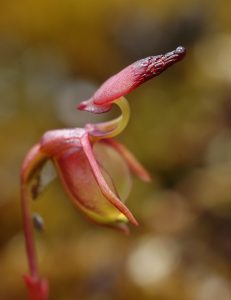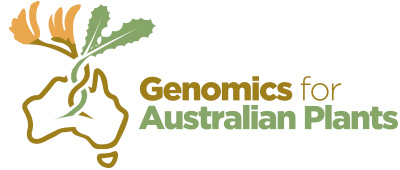Paracaleana gracilicordata / P. granitica complex (flying duck orchids)
Aim: Conservation Genomics
Project initiation: Aug 2020
Project lead: Katharina Nargar | Australian Tropical Herbarium (ATH) & National Research Collections Australia (CSIRO)

Photographer: Mark Clements. Reproduced with permission from Katharina Nargar.
Project description:
Australia harbours an exceptionally rich diversity of orchids, including many rare and threatened species. To enable a thorough assessment of the conservation status of rare Australian orchids, accurate species delimitation is required. Conservation genomics is a powerful tool to assess the taxonomic and conservation status of rare species.
This project investigates species delimitation and genomic diversity in a group of terrestrial sexually deceptive plants, the flying duck orchids (genus Paracaleana). The genus comprises at least five species of uncertain conservation status and thus requires further study. Several rare Paracaleana species (e.g. P. gracilicordata, P. granitica) are under increasing anthropogenic pressure, thus a conservation genomic assessment of their taxonomic status and genomic diversity is urgently needed.
So far, species delimitation in the flying duck orchids was mainly based on morphological differences. As sexually deceptive orchids engage in highly specialised plant-pollinator interactions, subtle floral differences among Paracaleana species were regarded as significant for changes in pollinators and thus hypothesised to function is effective reproductive barriers between closely related species. This project will test this hypothesis to establish if closely related species in Paracaleana are indeed reproductively isolated and constitute separate species. Thus, this study will contribute to a thorough assessment of the conservation status of Australia’s rare flying duck orchids and their conservation management.
